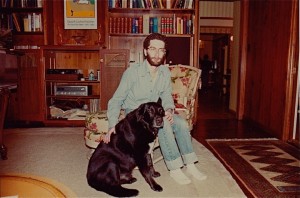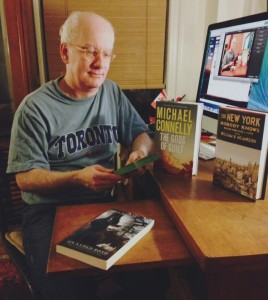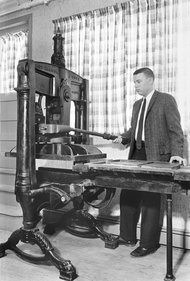Don’t Scoff–Serious Science on What Motivates Dogs As They Decide Where to Poop
Editor at Raw Story David Ferguson, known as @TRexstasy on Twitter, has a fascinating post up covering a new study of animal behavior by scientists in the Czech Republic and Germany demonstrating that dogs–when off-leash and left to their own devices–show a decided preference for finding a position to defecate so that they’re in line with the Earth’s magnetic field, along a North-South axis, and actually avoid doing their business on an East-West axis. Ferguson summarizes the findings of the research, published in the journal Frontiers in Zoology:
“The study examined the daily habits of 70 dogs during 1,893 defecations and 5,582 urinations over the course of two years. Consistently, during times of calm electromagnetic ‘weather,’ the dogs chose to eliminate while facing north or south. Dogs are not the only animals that are sensitive to the Earth’s magnetism. When it comes time for them to mate, salmon use their sense of the Earth’s magnetism to find their way back to the spawning grounds where they were born. Birds, similarly, migrate along magnetic lines. Even ants have been proven to have a sense of the Earth’s alignment and to distinguish between north, south, east and west. As to why the dogs prefer to poop facing north or south rather than east or west, that’s still a mystery. ‘It is still enigmatic why the dogs do align at all, whether they do it ‘consciously’ (i.e., whether the magnetic field is sensorial perceived (the dogs ‘see,’ ‘hear’ or ‘smell’ the compass direction or perceive it as a haptic stimulus) or whether its reception is controlled on the vegetative level (they ‘feel better/more comfortable or worse/less comfortable’ in a certain direction),’ wrote researchers, ‘Our analysis of the raw data…indicates that dogs not only prefer N-S direction, but at the same time they also avoid E-W direction.’”
This helps me understand why my old black Lab Noah–who was very obedient and with whom I often walked leash-less in the wilds of Franconia, New Hampshire, and suburban Cleveland–may have been so choosy about where he wanted to poop, and even once he had found his spot, sometimes moved around quickly in a narrowing circle, until stopping at what was evidently always just the right spot for him. I got Noah on a cross-country road trip with my brother Joel. We rescued him from a dog pound in Deadwood, South Dakota, in the summer of 1970, a day or two before his three-week stay there was going to end with him being put down. We enjoyed his companionship until 1982. I tell Noah’s story in greater detail at a post on this blog called How I Came to Have as a Companion a Black Lab Named Noah.












